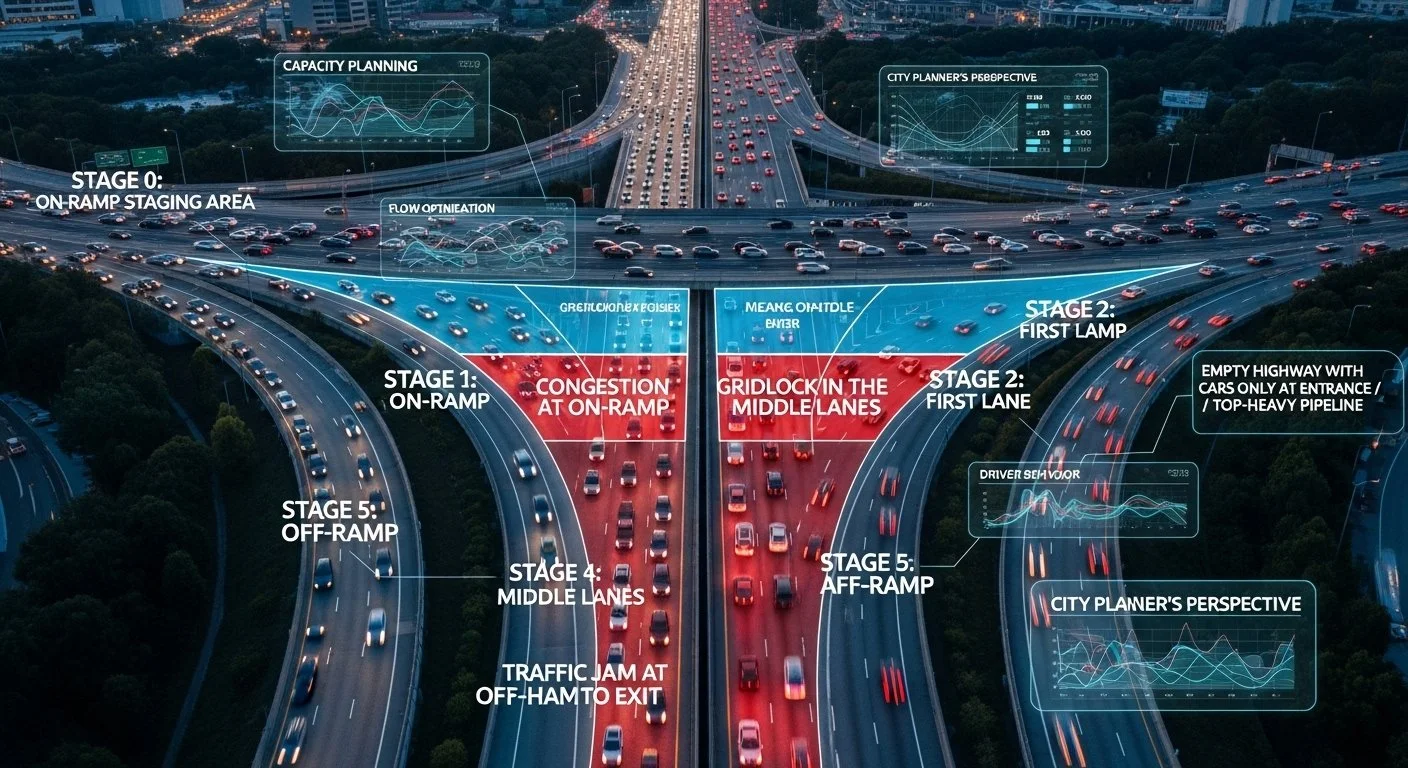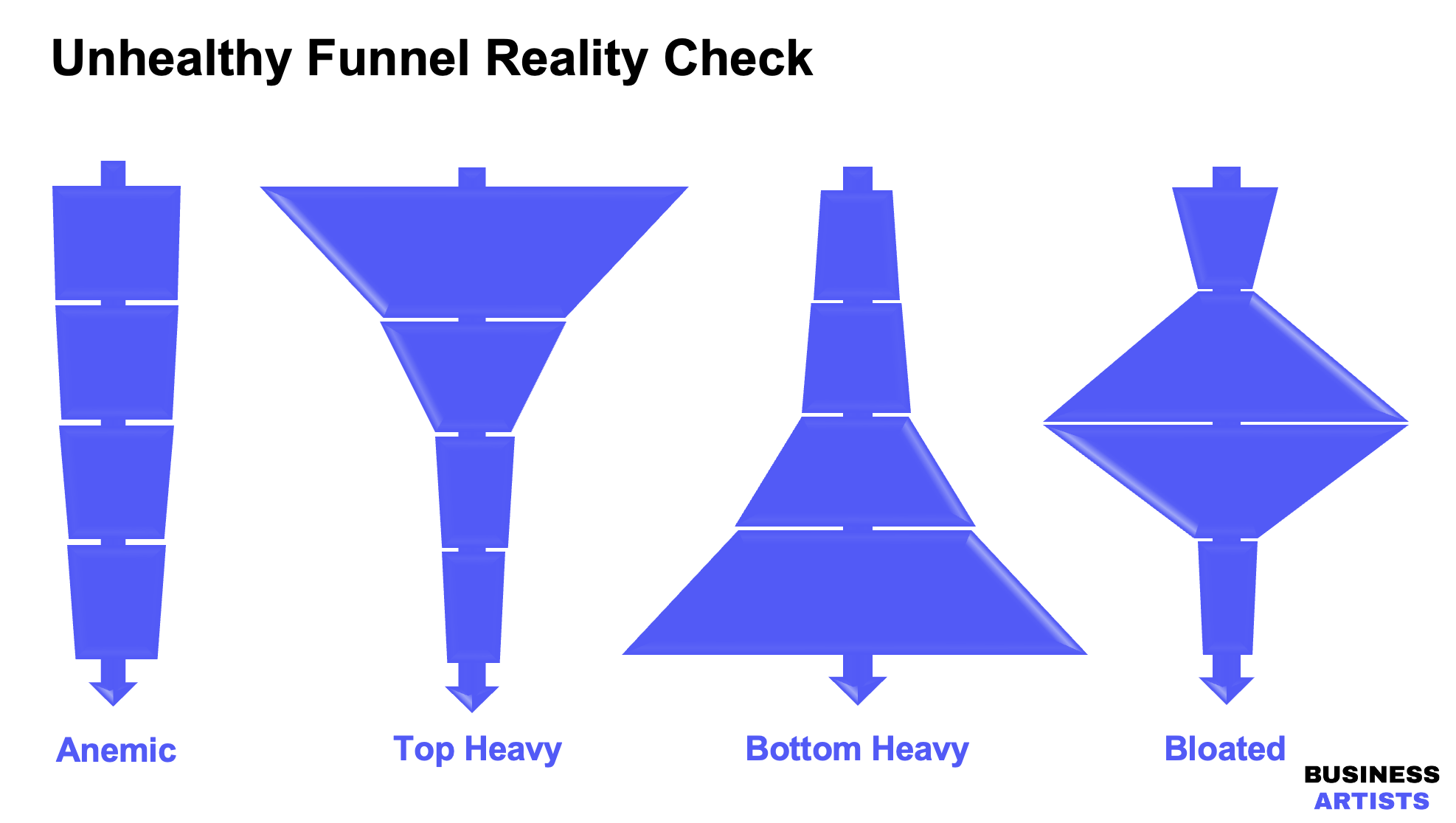Why Your Sales Funnel is Like the 405 Freeway
Your sales funnel isn't a funnel. It's a highway.
And just like a city traffic engineer doesn't solve congestion by focusing on individual cars, you can't fix your forecast problems by obsessing over individual deals. You need to think like a highway planner.
The Rules of the Road
Every highway system has basic rules: speed limits, lane usage, when you can turn, what yellow lights mean. These aren't suggestions (well maybe they are for some!)…they're the foundational agreements that allow thousands of cars to share the road safely and efficiently.
In your sales process, these are your stage criteria. They define what must be true for an opportunity to enter each stage and what must happen for it to exit:
Stage 0 (On-Ramp Staging Area): You've identified a potential customer and they fit your ideal profile. You're in the parking lot deciding whether to get on the highway.
Stage 1 (The On-Ramp): The customer has confirmed a need and is willing to engage. You've identified budget ownership and a champion. This is where you merge onto the highway—if you don't have these elements, you shouldn't be on the road yet.
Stage 2 (First Lane): The customer has prioritized the project, identified budget and timing, and invited you to propose. You have a coach working on your behalf and access to the person who can create budget.
Stage 3 (Middle Lane): You're down-selected as a final vendor. You have access to all buying group members and confirmed budget allocation. The traffic is moving, but you're not in the fast lane yet.
Stage 4 (Fast Lane to Exit): You're selected as vendor of choice. Legal and procurement are engaged. You have a clear line of sight to contract execution. You're approaching the off-ramp.
Stage 5 (Off-Ramp): Final agreements are signed. You're exiting the highway—the deal is closed.
Your customer should be in the driver’s seat, with your salesperson as their guide. Without clear rules, some reps merge their customers onto the highway too early with unqualified opportunities. Others insist every car stay in the first lane until it's "perfect." Neither approach works.
Traffic Patterns Reveal Everything
Here's where the metaphor gets powerful: When you step back and look at traffic patterns—not individual cars—you see where the system is broken.
Congestion at the on-ramp? Too many unqualified opportunities are entering your pipeline. You need better qualification (traffic lights that control flow) or clearer entry criteria. In sales terms, your Stage 0 to Stage 1 criteria might be too loose, or your reps might not understand what "qualified" really means.
Gridlock in the middle lanes? Opportunities are stuck in Stage 2 or 3 with no movement. This is your discovery and proposal phase. Are reps doing enough to advance deals? Do they have the skills to navigate this phase? Or is there "construction" in your process—like a broken handoff to pre-sales or legal reviews that take weeks?
Traffic jam at the off-ramp? Deals are piling up in Stage 4 and 5 but not closing. Your contracting process is the bottleneck. Maybe you need express lanes for certain deal types, or maybe your legal team needs more resources.
Empty highway with cars only at the entrance? Your pipeline is top-heavy. Reps are good at generating opportunities but terrible at progressing them. This is a skills and activity problem, not a capacity problem.
The City Planner's Perspective
Most managers look at their sales funnel like a frustrated commuter—fixated on the car in front of them that's going too slow (the deal that won't close). City planners look at the system holistically:
Capacity planning: How many cars can this highway handle? In sales: If each rep needs $3M in pipeline to deliver $1M in quota, and you have 10 reps, you need $30M in total pipeline capacity.
Flow optimization: Where are the bottlenecks? In sales: Which stage has the lowest conversion rate or the longest dwell time?
Infrastructure improvements: Do we need more lanes, better signage, or variable speed limits? In sales: Do we need more resources at certain stages, clearer handoff processes, or different qualification criteria?
Driver behavior: Are people following the rules? In sales: Are reps actually qualifying deals before moving them forward, or are they just advancing everything to inflate their pipeline?
Solving Individual vs. Systemic Problems
Here's the critical insight: Your job as a sales manager changes depending on whether you're looking at an individual car or the traffic pattern. Here is where the FIRM model works well.
Individual car (deal-level): "Adam, I see your $500K opportunity has been in Stage 3 for six weeks. Walk me through your MEDDPICC. Do you have the economic buyer engaged? What's blocking the progression to Stage 4?"
Traffic pattern (funnel-level): "Adam, I'm looking at your entire funnel. You have 47 opportunities in Stage 1 and only 8 in Stage 2. This tells me you're great at starting conversations but struggling to qualify or progress them. Let's talk about your discovery process and what's preventing you from advancing opportunities."
The first conversation might close one deal. The second conversation changes behavior that impacts dozens of deals over the next quarter.
From Metaphor to Action
Think about your last pipeline review. Did you discuss traffic patterns or individual cars? If a rep came to you with a congestion problem, did you help them think like a traffic engineer, or did you just tell them to focus on specific deals?
City planners don't solve congestion by asking every driver to drive faster. They analyze patterns, identify bottlenecks, adjust infrastructure, and sometimes add new rules to improve flow for everyone.
Your sales funnel works the same way. Stop focusing on individual deals in your funnel reviews. Step back. Look at the traffic patterns. Ask yourself:
Where is the congestion?
Are people following the rules of the road?
Do we have enough capacity?
What systemic changes would improve flow?
That's how you build a predictable, scalable sales operation. Not one deal at a time, but one system improvement at a time.
What traffic patterns do you see in your team's funnels? Where is the congestion, and what systemic changes would improve flow?


